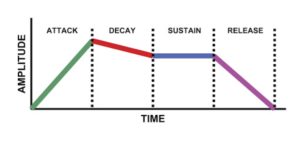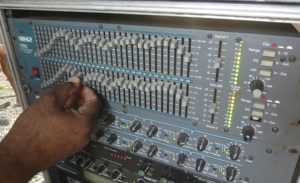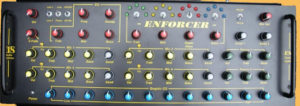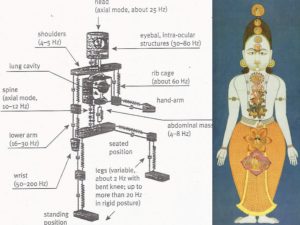The Sonic Logos [SST Research 4.0]
Continuing the series drafting the theoretical basis of SST Research (see pt. 1, pt. 2, and pt. 3), this blog considers the difference sound makes. It develops the idea of thinking knowledge through sounding – rather than image or text as the conventional metaphors for epistemic knowledge – is a fruitful way of revealing the knowledge systems in operation with SST. The first half describes Jamaican sound system engineers’ techniques for modulating the output of the set of equipment. The second half uses this as a basis for a sonic theory of knowing – described as sound knowledge – the sonic logos. This is not knowledge of sound as such; but rather knowledge that is sound, that is, full, complete and true knowing.
—
This blog takes the skilled techniques of Jamaican sound system audio engineers as one example of the kind of vibrational ways-of-knowing in practice. Everything the sound engineers do in terms of designing, building and fine-tuning their sets of equipment has one aim in mind. This is to maximise the affective intensities of the lived experience of the crowd in the session. Further the selection of the music played, it is the sounding of the music that is their chief concern. Thus, the place to begin is with the skilled techniques of the audio engineers. [1]
A sound system does not simply translate what’s been phonographically recorded, it interprets it in a particular way. To this end Jamaican reggae sound system audio engineers developed the highly skilled what I call a repertoire of phonomorphic (sound-shaping) techniques with which they deploy frequencies and amplitudes to “engineer” the vibes of the crowd. Jamaican sound system engineers have developed such auditory modulation into a fine art; I have called them connoisseurs of sound.
Shaping Sound
The importance of amplitude for all SST has been referred in terms of sonic dominance in the previous blog in this series. Volume is vital, but it is not only about decibels of air pressure over a given area of space; the amplified volume of the output of the set also has a temporal dimension. Sound propagates though air at a certain speed, considerably slower than that of light, for example. This means engineers can shape the way an audio signal plays out through time; this is durational phonomorphics. The sounding of reggae music attaches great importance to the impact of the signal, that is described as its onset or “attack” envelope (Figure 1). Quite simply, the sharper the attack the greater its impact for the crowd experiencing the sound. [2] At the other end of the timeline, with reggae music the sustain or the tail of the audio signal has been massively exploited creatively – in the form of the echo and reverb signature of reggae dub. [3]

Figure 1: The timeline of an audio signal
The other dimension of every sound is of course its frequency to which the engineers give very considerable attention with their phonomorphic techniques. Here it is the spread and the balance of the audio signal with which they are most concerned. The aim is the clarity of the sounding, this is to say the extent to which the entire frequency range has its own “auditory space” in which it can be heard distinctly. If this is not the case the sound becomes muddy and indistinct, with one frequency masking out another. The engineers deploy several phonomorphic techniques to avoid this.
There are several ways in which the engineers control the frequency distribution of the audio signal, only two of which there is space to mention here. The first, commonplace in numerous scenes and setting, is the graphic equalizer (EQ). This is simply array of filters, each controlling a particular small frequency band. A fader allows the engineer to increase or decrease the amplitude of that particular band (Figure 2).

Figure 2: An Ashly graphic equalizer in Anthony Myers Jam One rack
The other component that has a special place at the heart of the reggae sound system in particular. This is the crossover (Figure 3). Its function is to split the audio signal into a number of bands, each one of which is then fed into its own dedicated amplifier. This improves the quality of the sound significantly, as a specialist amplifier is much more efficient than one that has to handle a broader frequency range. [4] Similarly, specialist speakers produce better quality sound. In Jamaica there is traditionally a five-way split in which the eight octaves of human hearing are divided between tweeter, horn, hi mid, low mid and bass.

Figure 3: A classic reggae crossover: the Jah Tubbys Enforcer
With the crossover the engineer has very considerable control over the sounding of the set. Not only can he or she vary the volume of each of the five frequency bands independently of each other; with professional models they can also vary the crossover point at which the signal is sent to, for example, either the low mid or the hi mid, tailoring this to best suit the specifications of a particular brand of speaker unit. Of course, with a sound system the iconic speaker boxes are critical for getting the best from the unit itself. These too, and their positioning in the venue, provide a huge range of possibilities for modulating the sounding of the set. [5]
These components are mentioned here to be able to draw attention to the kind of understanding that a sound engineer is expected to muster. It is an embodied way-of-knowing; this involves head, heart and hand. It requires a good listening ear, as the sole way of judging the performance of the system. It is acquired through workshop apprenticeship, practice and trial and error. [6] This builds up experience and the kind of evaluative judgment that makes a connoisseur able to assess the distinctive individual timbre and formant of the sounding of a particular the set. [7] This all informed by particular popular cultural tradition and street scene.
The engineers’ skills and techniques are epitomised in their tuning of the set of equipment, as achieved by their modulation of the frequencies and amplitudes of its output. This is where the separated frequencies are brought back together again; the synthesis after the analysis. It is a mixing process, similar in this respect to the studio mixing of a music track. Like any musical instrument this tuning is essential for its best performance. It should be noted that a sound system has to be considered as the instrument for playing Jamaican music.
Furthermore, the sound system can be described equally well as an instrument for playing the vibes of the crowd. It is affective engineering as much as electrical engineering. Jamaican sound engineers have exactly the knowledge to do this. They have the sensitivities and sensibilities to be able to tune both gross (material) frequencies of the electronic of the equipment, as well as the subtle (spirit) vibrations of the collective body of the crowd (Figure 4). In short, they deal with science and scyence. In this respect it becomes impossible to separate epistemology (knowing) from ontology (being); and neither of these can be divorced from ethics (valuing).

Figure 4: Gross and subtle vibrations: the mechanical body and the subtle body as a chakra system [8]
The Sonic Logos
Even on the basis of this rudimentary account of the engineers’ skilled techniques it is now possible to make the claim that these amount to a particular kind of knowledge. I describe this as a sonic logos. Black knowledge (see this blog) relies on the logos of sound in the way that what can be described as white male European colonising knowledge (WMECK) does on the logos of the word. The difference is significant. Sound is what carries the word (phonetics); word is what describes the sound (language). The former is embodied, as with the performance of a gesture; the latter representational as with writing or code. It is that underpins epistemic knowledge.
As against the conventional ideas of knowledge, the engineers in their working practices are literally embodying a sonic logos. [9] The Greek term logos is certainly polysemantic – both sound and word can claim legitimate translation of logos, as in the famous “In the beginning was the Logos, and the Logos was with God, and the Logos was God” (John 1:1). In fact, Logos (λόγος) is from λέγω légō, meaning ”I say,” as distinct from the grammatical term word, λέξις léxis. While audio engineers have absolutely no need to understand Greek, locating what they do in this broader context is useful to the extent that it allows for a broader recognition of their achievements. [10] Just to make the point again, the sonic logos is a modality of thinking, knowing and doing; it finds expression in sounding, but is by no way restricted to this medium.
To conclude this blog, it is worthwhile to describe the three characteristics of the sonic logos. These are each to do with proportion, patterning and relationality. In the first place, as is evident from the engineers’ work mixing and tuning the set, the sonic logos is always a matter of proportional and relationship between sounds. Listening and evaluating is about ratios and balances, that is to say the qualities of sounding. These are distinct and different from its measured quantities, or indeed the binary differences on which codes of representation depend. The sonic logos concerns analogia (non-logic) rather than logia; the inexact “irrational” numbers of geometry (like Pi), rather than arithmetic.
With the second characteristic of the sonic logos these all-important relationships are recognised in the process of production of sounding. Unlike relatively static images, code or text, the sonic logos demands continual performance. The sonic logos is dynamic, not fixed as with a visual medium, whether clay tablets or machine code. The nature of the auditory medium is such that sounding is always and only ever in the relational process of generation and propagation. This helpful for recognising the engineers skilled techniques in which knowing is in seamless connection with doing, imagining with creating, as is the with every embodied craft.
The third and final kind of relationship that the sonic logos describes is between the listener and the listened-to. Across many SST scenes this relationship takes the form of the antiphony (call and response) between the MC or DJ and the crowd. But listening, it should be remembered, is considered as a mode of attention, rather than a sensory faculty. The sonic logos as a fully embodied and enminded experience bring together knowing, making and becoming. Furthermore, it is a triadic, rather than a dyadic relationship, unlike the conventional sender-receiver model of communication. [11] The third party in the three-way relationship is the community of communication – the shared traditions, values and collective experience in which a session takes place. [12] This is the hallmark of the music scenes that SST support around the world.
—
[1] What I know about sound system engineering has come from my conversations and observations of Jamaica audio engineers. I have to thank Winston “Weepow” Powell, Denton Henry, Anthony Myers and the late Horace McNeal for the generous sharing of their knowledge, see Henriques, Julian. Sonic Bodies: Reggae Sound Systems, Performance Techniques and Ways of Knowing. London: Continuum, 2011.
[2] Exactly how this is achieved is described in Henriques, Julian. Sonic Media: the Street Technology of the Jamaican Sound System. Durham: Duke University Press (forthcoming).
[3] See Veal, Michael. Dub: Soundscapes and Shattered Songs in Jamaican Reggae. Middletown: Wesleyan University Press, 2007; also Chude-Sokei, Louis (1997) “Dr. Satan’s Echo Chamber:” Reggae, Technology and the Diaspora Process, Bob Marley Lecture, Institute of Caribbean Studies, Reggae Studies Unit, University of the West Indies, Mona; reprinted in Chimurenga, 13, March 2008, np.
[4] This method has also been adopted for high end domestic hi-fi systems, where it is called an active system because the audio signal is spilt before amplification. With a passive system a single amplifier does all the work and if there is a specialist speaker it is protected with a filter.
[5] See Henriques, Sonic Media, op cit.
[6] As described in Henriques, Julian. Sonic Bodies: Reggae Sound Systems, Performance Techniques and Ways of Knowing. London: Continuum, 2011.
[7] Timbre is the harmonics of a sound, all the overtones and undertones that gives a musical instrument – or our speaking voice – its distinctive identity. Formant can be described as the patterning of timbre over a time period.
[8] Granlund, Johan (2000) Whole Body Vibration when Riding on Rough Roads, Vagverket, Road Engineering Division (Swedish Road Administration) publication 2000:31E; http://www.slideshare.net/JohanGranlund/wholebody-vibrations-when-riding-on-rough-roads; Chakras of the Subtle Body, Folio 2 from the Nath Charit, attrib. to Bulaki, 1823, British Museum.
[9] The Sonic Logos is the concluding chapter of Henriques, Sonic Bodies, op. cit pp 242 – 274.
[10] It also raises important methodological and theoretical questions on the status of the sonic logos as a third kind of knowledge different from both the episteme and the engineers’ embodied and enminded knowing.
[11] Communication is certainly dialogical, but it is also one of many processes that benefit from being considered as a triangulation, rather than as the kind of binary opposition that bedevils Western logic.
[12] This idea of the “community of communication” is explored by Peters, John Durham. Speaking into the Air: A History of the Idea of Communication. Chicago: University of Chicago Press, 2000.
